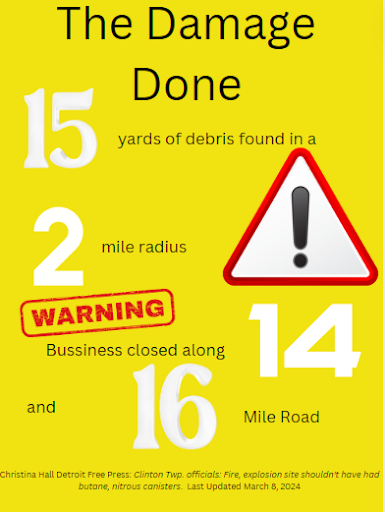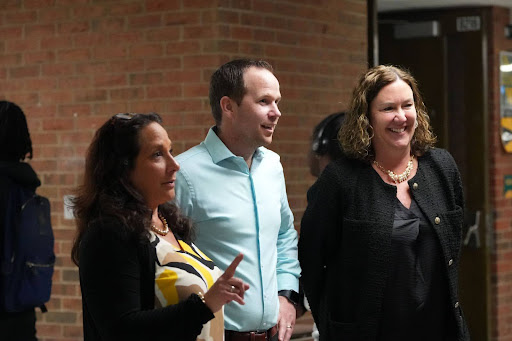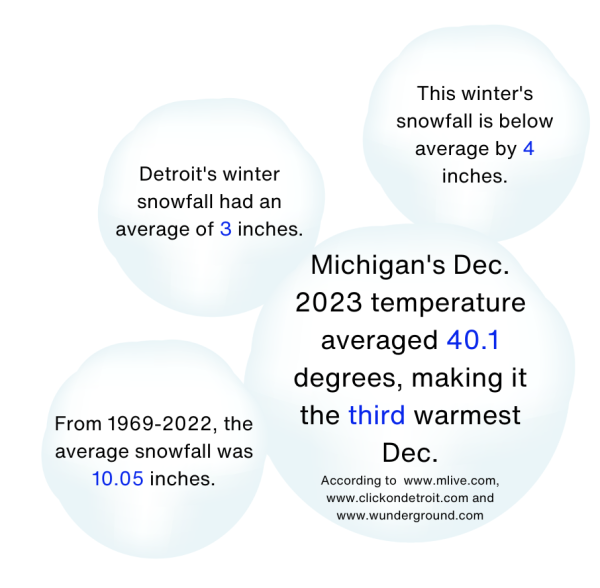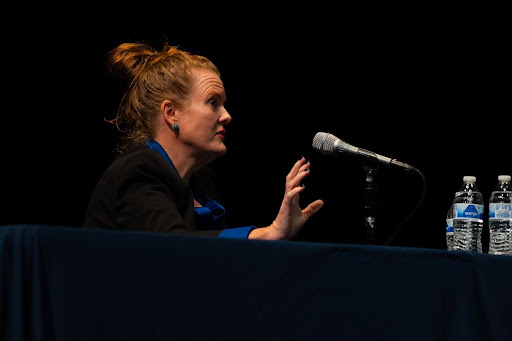Climate crisis worsens: Hurricane Ian increases in severity amidst the warming of ocean temperatures

Photo credit: Grace Rossman
November 8, 2022
The deadliest hurricane to hit Florida since 1935, Hurricane Ian, struck the southwestern coast of Florida on September 28. Mass destruction followed, leaving homes and businesses either underwater or completely demolished.
According to WDIV Channel 4 meteorologist, Brandon Roux, the severity of Hurricane Ian is the product of the worsening climate crisis, and the rising ocean water temperatures.
“The scientific belief is that the warming of the Arctic temperatures, both on land and in the ocean, has [slowed] the steering winds,” Roux said. “The ocean waters are warmer, causing the steering winds to become much less impressive and make much less of a force, so they stall out and take two or three days to get out of an area, where in normal conditions, it would be a day. All of these storms produced biblical flooding because of the slow pace that they move.”
Senior Karly Harris has been personally affected by the storm, as she vacations in Sanibel Island with her family. It remains a mystery whether her family’s condo on Sanibel Island is still standing following the natural disaster.
“No one knows what’s gone, and no one knows when we’ll be able to go back,” Harris said. “It makes me sad because I have spent a lot of my childhood there and I have a lot of my best childhood memories on the island.”
According to science teacher Andrew Pola, not only are Florida residents affected by Hurricane Ian, the natural disaster has had adverse effects on the ecosystems in Florida.
“Wetlands can be damaged and literally eroded away, and then there’s a lot of silt that ends up washing out into the ocean,” Pola said. “Creatures that live on the bottom of the ocean, like oysters and corals can get covered in sediment. Populations are going to decline because of that.”
It’s not only hurricanes that are worsening as the climate changes. According to Roux, the severity of storms across the country, including in Michigan, have been elevating.
“We have seen 500 year floods happening every couple of years,” Roux said. “But we are getting summer rain events from storms that are producing catastrophic flooding here every couple of years, where it should be every 500 to every 1000 years. It’s not so much drought, temperatures, or the number of storms, it’s the size and moisture content of each individual storm growing and intensifying due to climate change.”
According to Roux, the division in the United States regarding the climate crisis is another factor that has led to the extreme damage of Hurricane Ian. Although he acknowledges that there have been significant attempts to end the climate crisis, as a country, the United States is struggling to put an end to the problem.
“I think there has been significant change,” Roux said. “But, meteorologists will tell you, it’s never enough. There’s too much politics in the way, there’s too much division with this country politically, to come together and see things scientifically as they should be, so that division will lead to not enough change.”
Although the hurricane continues to be a devastation across the country, Pola is optimistic that we will learn and grow from the tragedy.
“Looking at it in a positive light, [in the future] there’ll be more zoning and regulation laws passed to where there’s higher protections put in place in coastal communities,” Pola said. “Perhaps, there [will be] zoning, where we’re not building homes, businesses and developments that close to the coast, so there are wetlands to buffer the storm surge.”
We have seen 500 year floods happening every couple of years,” Roux said. “But we are getting summer rain events from storms that are producing catastrophic flooding here every couple of years, where it should be every 500 to every 1000 years. It’s not so much drought, temperatures, or the number of storms, it’s the size and moisture content of each individual storm growing and intensifying due to climate change.
— Brandon Roux











